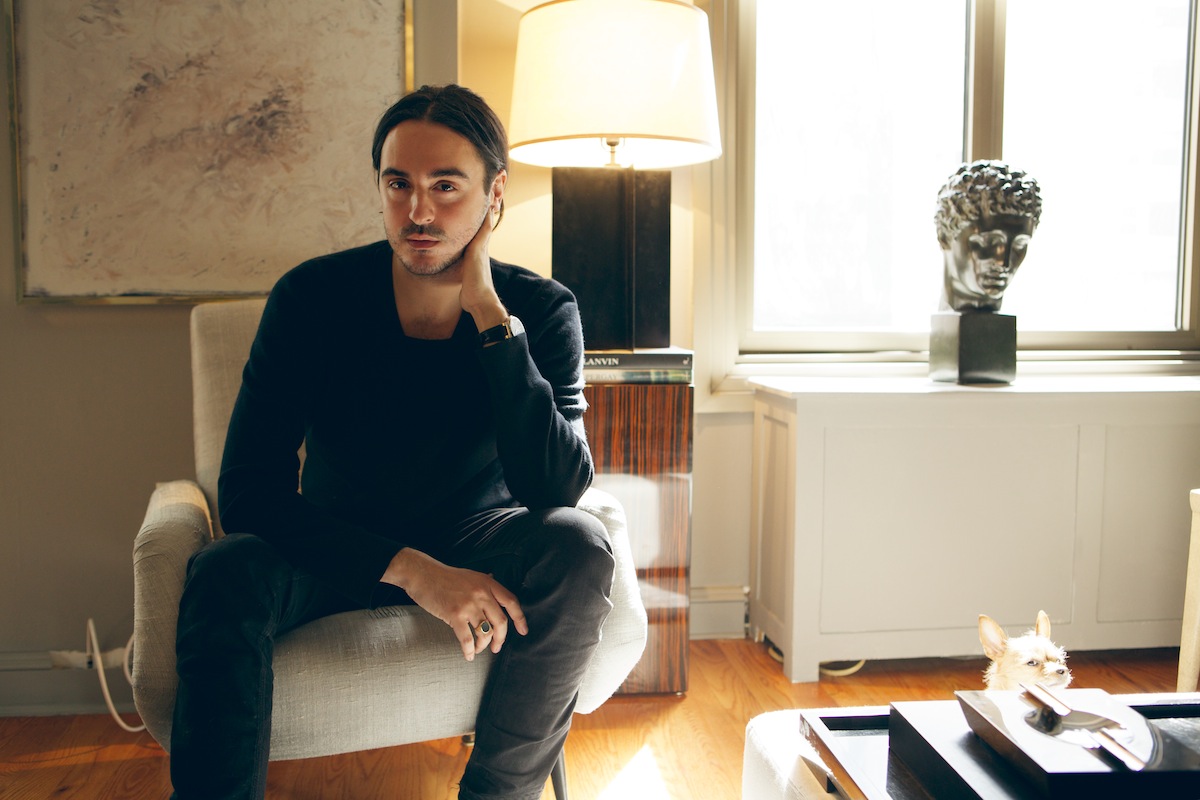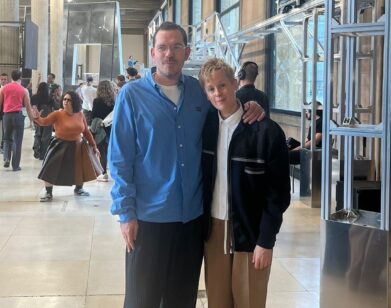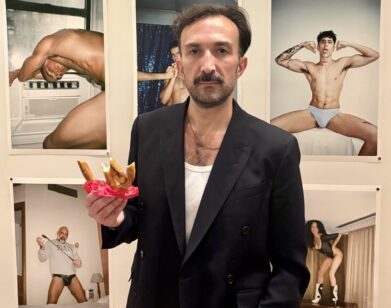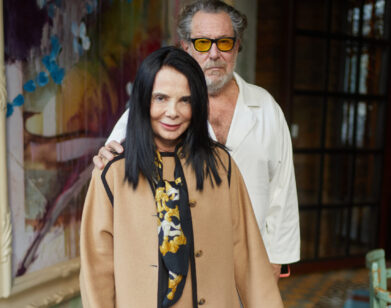Ryan Korban’s New Luxury

ABOVE: RYAN KORBAN. PHOTO BY FRANK SUN
In his new design book, Ryan Korban: Luxury Redefined (Harper Collins), Ryan Korban not only reveals his approach, but also reminds us that sometimes creativity can’t be taught.
The book’s pages are filled with projects and images that continue to inspire the young designer. From photographs by Karen Knorr to the project that launched his career, Edon Manor, Korban underlines the significance of integrating luxury into everyday life and bringing a sense of drama to every room. We caught up with Ryan Korban at his Central Park South apartment to discuss his first book, designing on a budget, and how he defines a complete space.
NEESHA ARTER: Your first book, Ryan Korban: Luxury Redefined, features your projects over the past six years that define the new meaning of modern luxury. What is the new definition of luxury?
RYAN KORBAN: I’ve always said the new luxury is the use of luxury. We saw it in fashion and I think it translates nicely into interior design. All of a sudden people started beating up precious items or wearing fur coats with jeans, and then the Hermès bags came off the shelves. It used to be treated as something so precious, but now luxury has taken on a new life.
ARTER: How can New Yorkers achieve modern luxury on a budget?
KORBAN: I’m a huge believer in the home accessory, and I think that’s what tells a story and gives a space heritage. I think people have the misconception that they need to spend the most money on the big pieces in a home, but I’ve always believed in spending the most money on the small pieces. I think you’ll be able to see that throughout the book.
ARTER: What are three critical accessories that you recommend?
KORBAN: I think what you want to do in any space is create a sense of drama. I think sculptures are a really easy way to do that and elevate any sort of space. I’m also a huge believer in lighting, as you can probably see. [laughs] I have a lot of lamps. I think it’s another easy way to transform a space, and I don’t think you can have too much lighting, especially in New York City or any metropolitan setting. I would also say books, because it’s a really affordable way to add something to your apartment.
ARTER: What inspired you to do a book?
KORBAN: My friends and my clients inspired me to do a book. I’m so grateful and so lucky to work with so many amazing people. All of my projects made me want to do a book because it’s so much more than interior design. It’s the fashion, the art, the entertaining, and everything else.
ARTER: Why now?
KORBAN: I thought, “Why wait?” I didn’t want to be afraid of trying something at a young age because so many interior design books are by artists I look up to, but I am able to send a different message to a different group.
ARTER: From the Balenciaga store to James Franco’s apartment, you have done many different projects. What are questions you ask a client before designing a space for them? â?¬â?¬
KORBAN: It’s less of a conversation and more of a visual exchange. I like to always start with a feeling. What’s the mood of it? When it’s a retail space, it’s really important to talk about the mood, because they are all about the collection. I love the challenge of making spaces so alluring that someone needs to purchase something to have a piece of the space.
ARTER: Have you ever had a client who doesn’t really have a vision and allows you to take over?
KORBAN: Yes, that’s usually when it’s the best. It doesn’t happen often. [laughs] I think the dream is that someone hires you for what you do and lets you do it. You’d be surprised at how rarely that happens, but when someone does, you get the most magical product.
ARTER: You have been known for merging fashion and interiors. Is there any particular designer you would love to work with?
KORBAN: I would have really liked to work with Halston.
ARTER: You have three critical elements in your style: sex, romance, and fantasy. If you had to choose, which is the most important to you?
KORBAN: That stems from how we were going to base the book. They were going to be the three sections of the book because they’ve really stuck with me. It’s hard to say which one of them is most important, because I really do think it’s the combination of them that creates something alluring and beautiful.
ARTER: In the intro of your book you talk about the chemistry between your parents being a source of inspiration for your design. You mention your mother’s glamour, fur coats, and the romantic décor of the house you grew up in. What are some of your favorite childhood memories?
KORBAN: I think it was a unique position because I was young in the late ’80s and early ’90s, and I had an older brother who was right in the “angst stage.” We were in this house that was decorated in all pastels, with my mom who had long fake red nails with the late-’80s mentality of “more is more.”
ARTER: Do you ever look back and think, “Maybe I did have an eye for design?”
KORBAN: Yeah, all the time. It was just the want and the desire. Some people are born and know exactly what they want to do, but my journey was figuring out that everything I was interested in put together was interior design. At an early age, it would be the dining room table for holidays, and I also loved going to the florist with my mom. I realized later that the culmination of my interests was interior design.
ARTER: Your father is Lebanese; how has his heritage influenced you?
KORBAN: I think it’s interesting to grow up with a family from the Middle East in the United States. He’s always really liked gold. [laughs] He was a hairdresser, very flashy and always had a few too many buttons undone on his shirts. I remember at a really young age picking out awnings for a salon he was doing called Le Papillon, which is “the butterfly” in French, and the one he picked out was black and the writing was gold and he always told me that you could never go wrong with that combination. That’s always stuck with me, and it’s funny because the cover of the book is black and gold. [laughs] It’s a very Lebanese thing.
ARTER: In your book, you mention the pros and cons of not being schooled in interior design. What is your advice to aspiring interior designers?
KORBAN: I looked at the spectrum on both ends. When I was at The New School in New York, I had friends who studied architecture and interior design, while I went the more liberal-arts route. I believe there is nothing better than an education and a skill set, but what was more important for me was experience. I also think it’s critical to have a very clear aesthetic, because there are so many designers and it’s easy to get lost.
ARTER: The seven sections of the book range from “The Little Details” to your beloved use of animal skins. How did you pick the sections?
KORBAN: I think they are the seven things that are most interesting for me to look at and design.
ARTER: Did you have a particular favorite?
KORBAN: I like them all, but I do have to say “The Little Details” have always been an important thing to me. I also love the one that focuses on the inspiration of flowers and how they inspire a color palette. I also love “The Suite Life,” because hotels have always been the ultimate environments to me.
ARTER: Your good friend Alexander Wang endlessly praises your design. He recently said the rooms you design are “rooms you never want to leave.” As a designer, what elements anchor a person to a room?
KORBAN: I think it’s a use of material. I don’t think it’s about what the item is, but what it’s finished in. I think what grounds a space is the materials that you use, so if you’re using stone or marble on the floor, you inherently feel like you’re in a place that’s really something.
ARTER: How do you know when a room in a home is complete? Is it a feeling you get?
KORBAN: That’s difficult. A home, to me, can feel finished but never complete. A personal space is never complete until your story is over, and your story’s never over.
RYAN KORBAN: LUXURY REDEFINED IS OUT NOW.






